
Elizabeth Buffalo, PhD. University of Washington.
Dr. Buffalo's research is aimed at understanding the neural mechanisms that support learning and memory. Using neurophysiological techniques, we record simultaneously from multiple electrodes in the hippocampus and surrounding cortex in awake, behaving monkeys.
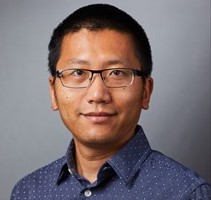
Jason Cai, PhD. Yale University School of Medicine.
Dr. Cai's research group is currently focusing on the development and translation of novel PET imaging probes for the investigation of neurodegenerative disorders.

Mark Cembrowski, PhD. Department of Cellular and Physiological Sciences, Faculty of Medicine, University of British Columbia
Dr. Cembrowski aims to understand how the brain forms, stores and retrieves memories. To do this, they take a multidisciplinary, multiscale approach combining big data analysis and cutting-edge experimental techniques to study memory across the spatial scales of the nervous system: molecules, cells, circuits, and behavior.
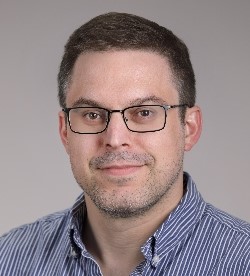
Vincent Costa, PhD. Oregon Health & Science University
Dr. Costa's research is focused on using computational approaches from reinforcement learning and decision making to understand the function of the mesolimbic circuits in emotion, cognition, and disease. To do this he takes a multidisciplinary approach combining computational modeling of behavior, neurophysiology, neuroimaging, psychopharmacology, and chemogenetic methodologies in rhesus macaques and humans.

Mark D’Esposito, PhD. University of California Berkeley.
Dr. D’Esposito focuses on investigating the neural bases of high-level cognitive processes such as working memory and executive control. His lab employs functional MRI (fMRI) to identify the neuroanatomical substrates and temporal dynamics of various cognitive processes in normal human subjects. Also, they been investigating the role of the dopaminergic system in working memory and frontal lobe function, as well as behavioral studies in patient populations with frontal lobe dysfunction (e.g. stroke, head injury, Parkinson's disease) in order to further understand the mechanisms that underlie working memory.

Phil Fisher, PhD. University of Oregon
Dr. Fisher’s research focuses on developing and evaluating early childhood interventions in socially and economically marginalized communities, and on translating scientific knowledge regarding healthy development under conditions of adversity for use in social policy and programs. Dr. Fisher is particularly interested in the effects of early stressful experiences on children's neurobiological and psychological development. He is also interested in the brain's plasticity in the context of therapeutic interventions.

Sam Golden, PhD. University of Washington.
Dr. Golden's interests encompass understanding the psychological and neural mechanisms guiding reward processing. He is particularly interested in understanding how neuropsychiatric disorders- such as maladaptive aggression, depression and substance abuse - subvert basic reward circuitry to manifest pathological behavior.
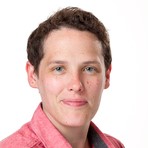
Rebecca Hodge, PhD. Allen Institute for Brain Science
Dr. Hodge is part of the Human Cell Types program, which seeks to understand the unique structural and functional characteristics of the human cerebral cortex. In order to achieve this goal, they are striving to classify and describe the diversity of neuronal and glia cell types that exist in the developing and adult human brain. The program plans to build upon previous human gene expression atlases created at the Allen Institute, and extend this work to comprehensively describing the molecular characteristics of cells in the human cerebral cortex at the level of single cell gene expression.

Santiago Jaramillo, PhD. University of Oregon.
Dr. Jaramillo studies the neural circuits that mediate auditory cognition. Their goal is to understand how we assign meaning to sounds, how we attend to sounds or ignore them, how we remember them, and how disorders of the brain can affect these processes.

Itamar Kahn, PhD. Technion University
Dr. Kahn is interested in understanding how the division of the brain into areas in the cerebral cortex and the connectivity of the cerebral cortex with subcortical regions (considered conserved in evolution across mammalian species) and cerebellum gives rise to high-order cognitive function and pathology.

Alan Koretsky, PhD. NINDS.
Dr. Koretsky's laboratory is interested in two main areas; developing novel imaging techniques to visualize brain function, and the regulation of cellular energy metabolism combining molecular genetics with non-invasive imaging tools.
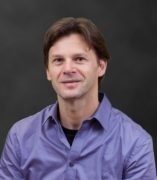
Andreas Linninger, PhD. University of Illinois at Chicago.
Dr. Linninger’s lab explores fundamental mechanisms of cerebral blood flow and metabolism in the brain to explain the control of cerebral blood flow as a function of brain activity in normal and disease states such as stroke. Their work aims to quantify transport and pharmacokinetic mechanisms using advanced imaging modalities in combination with computational techniques.

Bonnie Nagel, PhD. Oregon Health & Science University.
Dr. Nagel's research focuses on adolescent brain and cognitive development in healthy and at-risk populations. Using neuroimaging, she studies the development of executive, emotional, and reward-based networks in the brain and how perturbations to these systems may result in a heightened vulnerability for mental illness during the adolescent years.

Joseph Quinn, MD. Oregon Health & Science University.
Dr. Quinn is the Director OHSU Parkinson Center and Movement Disorders Program. His work focusses on therapeutic development for the treatment of Parkinson’xs Disease and testing of therapeutics in a murine models of Alzheimer's disease.
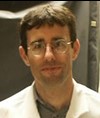
Fred Rieke, PhD. University of Washington.
Dr. Rieke's research focuses on sensory signal processing, particularly in cases where sensory systems perform at or near the limits imposed by physics. Photon counting in the visual system is a beautiful example. At its peak sensitivity, the performance of the visual system is limited more by the division of light into discrete photons than by biological noise or inefficiencies. This observation guides our investigation of the underlying mechanisms.
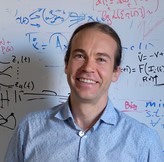
Eric Shea-Brown, PhD. University of Washington.
Dr. Shea-Brown's work is on the nonlinear dynamics of neurons, neural networks, and neural populations. The dynamics are beautiful, and are richly varied from setting to setting – at times governed by mechanisms we can distill and explain, and at times eluding our best analytical tools. Ultimately, we want to understand how they encode and make decisions about the sensory world.

Josh Siegle, PhD. Allen Institute for Brain Science.
Dr. Siegle studies the mechanisms of how neural activity on the timescale of milliseconds underlies the brain's tremendous versatility. He applies new techniques for multichannel electrophysiology and optogenetics to observe and perturb the visual system in real time.

Jason Snyder, PhD., University of British Columbia.
Dr. Snyder studies neurogenesis throughout the lifespan to understand the biology of memory and mood.

Colin Studholme, PhD. University of Washington.
Dr. Studholme's research is focused on mathematical and computational techniques to study brain anatomy and its change over time, with a particular focus on fetal and premature neonatal brain growth. His group has developed a 4–dimensional computational map of tissue volume changes and surface shape changes that occur when the human brain surface begins to fold, in a process that will go on to form the complex anatomy of the adult human brain.

Elinor Sullivan, PhD. Oregon Health & Science University
Dr. Sullivan’s research focuses on examining the influence of maternal metabolic state and dietary environment on offspring behavioral regulation, with an emphasis on behaviors that relate to mental health and behavioral disorders including autism spectrum disorders, attention deficit hyperactivity disorder, anxiety, and depression
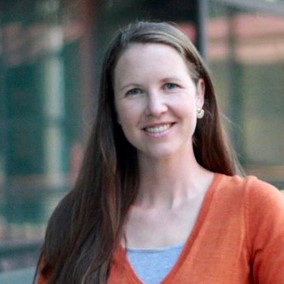
Emily Sylwestrak, PhD. University of Oregon.
Dr. Sylwestrak's current work focuses on understanding how heterogenous, molecularly-defined neuronal populations work together to drive behavior, finding that different habenular cell types encode predictive or resultant aspects of motivated behavior, suggesting that habenular dysfunction may contribute to altered reward processing in neuropsychiatric disorders.
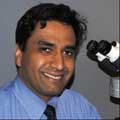
Vivek Unni, MD. Oregon Health & Science University.
The goal of Dr. Unni's research is to understand how the protein alpha-synuclein is involved in Parkinson’s disease (PD) and related disorders like Dementia with Lewy Bodies (DLB). Of all these diseases, the best evidence that simply increasing the specific protein level can cause disease exists for PD and DLB. The goal of our work is to use mouse models of PD and DLB, where alpha-synuclein is over-expressed, to understand in the living brain how increasing levels of this protein leads to its aggregation and subsequent neuronal dysfunction and cell death.

Yun Wang, PhD. Allen Institute for Brain Science.
Dr. Yun Wang as a leading scientist plays a major role for the project on the reconstruction and classification of single neurons at whole-brain-level. She has also made critical connections with Dr. Hanchuan Peng’s team to work together toward improving automated reconstruction methods for large scale reconstruction and analysis of neurons at whole brain level.

Catharine Winstanley, PhD. University of British Columbia.
Dr. Winstanley’s lab studies the behavioral and neural components of impulsivity, using animal models and both pharmacology and molecular biological techniques. Their findings have had a major impact on research into decision-making, substance abuse, traumatic brain injury and neurological and psychiatric disorders.

Marina Wolf, PhD. Oregon Health & Science University.
Dr. Wolf’s laboratory uses animal models to understand why recovering addicts remain vulnerable to drug craving and relapse even after long periods of abstinence.